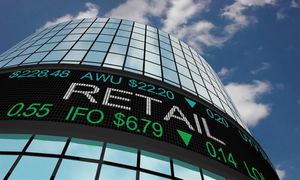
As millions of Americans prepare to hit the roads for the Thanksgiving holiday in 2025, a significant and welcome trend has emerged: national and regional gasoline prices are hovering at levels not seen in nearly four years. This substantial drop in fuel costs offers a tangible financial reprieve for holiday travelers, making road trips more affordable than they have been in recent memory. However, this affordability arrives against a backdrop of broader economic uncertainties, which appear to be tempering overall travel enthusiasm despite the cheaper fuel.
The immediate implication of these near 4-year lows is a direct boost to consumer disposable income, effectively acting as a form of economic stimulus. While lower gas prices alleviate a significant burden for households, a projected decrease in road trips compared to the previous year suggests that other factors, such as concerns over a cooling economy and job security, are influencing consumer behavior. This confluence of affordable fuel and cautious spending creates a unique economic landscape as the holiday season commences.
Detailed Coverage: A Thanksgiving Windfall at the Pump
The national average price for a gallon of regular gasoline in the United States is currently estimated between $3.03 and $3.08 as of mid-to-late November 2025. This figure, while slightly higher than some specific points in the previous year, remains remarkably low compared to historical holiday averages. GasBuddy forecasts the national average to settle around $3.02 per gallon on Thanksgiving Day 2025, marking one of the most affordable holiday averages since 2021.
Regionally, states like Wisconsin and Ohio are experiencing particularly favorable prices. Drivers in Wisconsin are seeing average gas prices between $2.73 and $2.78 per gallon as of November 24-25, 2025, reflecting decreases from both a month and a year prior. For instance, Green Bay recorded average prices around $2.75 per gallon, contributing to the state's overall average of $2.732. Similarly, Ohio's average gas price on November 24, 2025, was approximately $2.857 per gallon. While some earlier reports indicated a slight year-over-year increase, more recent data for late November 2025 shows prices below $3 in many areas, such as Akron at $2.81 and Cleveland at $2.92, indicating a downward trend from recent weeks and months.
Several key factors have converged to drive these prices down. A primary contributor is the annual seasonal shift to winter-blend gasoline. Refineries transition from producing more expensive summer-blend fuel, which has stricter vapor pressure specifications, to cheaper winter-blend fuel, reducing production costs. This transition typically begins in mid-October. Concurrently, reduced demand following the post-summer travel season naturally creates downward pressure on prices. Furthermore, stable or declining crude oil prices have played a crucial role, with Brent crude oil prices seeing a 17% decline since June and West Texas Intermediate crude oil reported under $60 per barrel in mid-November. Finally, increased production and supply from refineries, which have completed seasonal maintenance, combined with the OPEC+ alliance's agreement to raise oil production starting in October, have boosted overall supply in the market.
Despite the attractive fuel costs, there's an interesting trend emerging in consumer behavior. A GasBuddy survey indicates that only 60% of Americans plan to take a road trip this Thanksgiving, a notable decrease from 72% in 2024. This suggests that while gas prices are cooperating, broader economic uncertainty, including concerns about a cooling economy, stock market fluctuations, and potential job losses, is making Americans more cautious about their overall spending and willingness to travel. While 74% of respondents stated that gas prices had no effect on their Thanksgiving travel plans (up from 56% last year), the overarching sentiment of economic caution is leading many to stay closer to home, highlighting that cheaper fuel, while welcome, may not fully offset anxieties related to household budgets and job security.
Corporate Fortunes: Winners and Losers in a Low-Price Environment
The sustained period of low US gas prices ahead of Thanksgiving 2025 is creating a clear distinction between winning and losing public companies across various sectors. The ripple effects extend from the wellhead to the retail store, impacting profitability and strategic decisions.
On the losing side are primarily Oil and Gas Producers (Upstream Companies). Their revenue is directly tied to the market price of crude oil and natural gas. Major integrated companies like ExxonMobil Corporation (NYSE: XOM) and Chevron Corporation (NYSE: CVX), despite their diversified operations, will see reduced profitability from their exploration and production segments. Pure-play E&P firms such as ConocoPhillips (NYSE: COP), EOG Resources Inc. (NYSE: EOG), and Diamondback Energy Inc. (NASDAQ: FANG) will face more direct and pronounced negative impacts, potentially leading to decreased capital expenditure, scaling back of operations, and even job losses, particularly for producers with higher operational costs.
Conversely, Oil Refiners (Downstream Companies) are poised to be significant winners. Lower crude oil prices, which are their primary raw material, translate to reduced input costs. As long as the price of refined products like gasoline and diesel does not fall as sharply or quickly, refiners can see their profit margins, known as "crack spreads," widen. Companies such as Marathon Petroleum Corporation (NYSE: MPC), Valero Energy Corporation (NYSE: VLO), and Phillips 66 (NYSE: PSX) are expected to experience enhanced profitability due to these favorable market dynamics.
The Transportation Sector stands to benefit substantially from lower fuel costs, which represent a major operating expense. Airlines like Delta Air Lines Inc. (NYSE: DAL), United Airlines Holdings Inc. (NASDAQ: UAL), Southwest Airlines Co. (NYSE: LUV), and American Airlines Group Inc. (NASDAQ: AAL) will see a direct reduction in jet fuel expenses, leading to improved profit margins and potentially allowing for investment in fleet modernization or more competitive fares. Similarly, Trucking and Logistics companies such as United Parcel Service Inc. (NYSE: UPS), FedEx Corporation (NYSE: FDX), Knight-Swift Transportation Holdings Inc. (NYSE: KNX), J.B. Hunt Transport Services Inc. (NASDAQ: JBHT), and Old Dominion Freight Line Inc. (NASDAQ: ODFL) will experience significant cost savings from lower diesel and gasoline prices. These savings can either be passed on to customers as lower freight rates or retained to boost profit margins, potentially leading to increased freight volumes as shipping becomes more affordable.
Finally, the Retail and Consumer Discretionary Sectors are also set to gain. Lower gas prices effectively act as a tax cut for consumers, increasing their disposable income. This freed-up cash is often redirected towards other goods and services, particularly non-essential items, dining out, entertainment, and travel. General retailers like Walmart Inc. (NYSE: WMT) and Target Corporation (NYSE: TGT), along with e-commerce giant Amazon.com Inc. (NASDAQ: AMZN), could see a boost in sales. Specialty retailers, restaurants (e.g., Chipotle Mexican Grill Inc. (NYSE: CMG), Starbucks Corporation (NASDAQ: SBUX)), and travel & leisure companies (e.g., Marriott International Inc. (NASDAQ: MAR), Hilton Worldwide Holdings Inc. (NYSE: HLT)) are also likely to experience increased consumer spending and improved financial performance.
Broader Implications: A Shifting Economic Landscape
The sustained period of low US gas prices ahead of Thanksgiving 2025 is more than just a temporary boon for consumers; it signifies a complex interplay of broader industry trends, economic ripple effects, and potential policy considerations. These prices fit into a global energy market characterized by significant supply dynamics and evolving demand patterns.
In the consumer economy, low gas prices provide a substantial boost to disposable income. Americans are projected to spend approximately $12.3 billion less on gasoline in 2025 compared to 2024, an 8% decrease. This "fuel windfall" can stimulate spending in other sectors, acting as a mild economic stimulus. While offering relief from broader inflationary pressures, consumer sentiment remains influenced by concerns over rising food prices and general economic uncertainty. The U.S. Energy Information Administration (EIA) predicts that U.S. drivers will spend the lowest share of their disposable income on gasoline in two decades, excluding the pandemic year of 2020, partly due to falling prices and partly to increasing vehicle fuel efficiency.
Within the energy sector, these low prices are primarily a result of a surge in global oil supply outpacing demand growth. OPEC+ plans to unwind its voluntary production cuts by September 2025, while non-OPEC producers like the U.S., Brazil, and Guyana continue to ramp up output, leading to swelling global oil inventories. For the upstream oil and gas industry, sustained low prices can lead to reduced revenues and decreased investment in new projects, straining a significant domestic industry. The midstream sector might shift focus from building new pipelines to optimizing existing infrastructure. Planned refinery closures (e.g., Phillips 66's Los Angeles refinery by end of 2025, LyondellBasell's Houston refinery in Q1 2025) could introduce some upward pressure on regional gasoline prices, though this may be offset by continued low crude oil costs.
The ripple effects extend to various sectors. While low gas prices might seem to dampen short-term consumer demand for Electric Vehicles (EVs), the underlying trends favoring clean technologies remain robust. Solar and wind energy continue to be the cheapest forms of new power generation, and strong regulatory support, such as the U.S. Inflation Reduction Act (IRA), continues to drive demand for green tech. Despite some reports of sluggish new EV sales, used EV sales are surging and nearing price parity with used gasoline cars, and electricity consistently remains a cheaper fuel than gasoline. For oil-producing nations (OPEC+), sustained low oil prices put significant financial strain, challenging their ability to fund national budgets and maintain market stability.
From a regulatory and policy perspective, the political landscape plays a crucial role. A hypothetical Trump administration, as of late 2025, is expected to prioritize domestic fossil fuel production, aiming to reduce barriers to extraction and streamline permitting for energy infrastructure. This stance would likely involve rolling back support for clean energy, potentially by removing tax credits for wind and solar and canceling federal investments in EV charging infrastructure, though the inherent cost-effectiveness of EVs is expected to ensure continued, albeit potentially slower, growth. For LNG exports, policy would likely focus on aligning export strategies with national security goals while addressing domestic price impacts, possibly by streamlining licensing for increased production and exports.
Historically, periods of sustained low gas prices have occurred multiple times. The 2014-2016 oil price crash, driven by a surge in U.S. shale oil production, saw gasoline prices fall significantly, leading to a stimulus in private consumption but a reduction in oil and gas sector investment. The early 2020 (COVID-19 pandemic) period also saw dramatic price drops due to a collapse in global demand. The current situation shares similarities with 2014-2016 in terms of global oversupply and robust U.S. production. However, key differences include the U.S.'s current status as a net exporter of crude and refined products, which adds complexity to the economic impact, and the increasing fuel efficiency of vehicles and growing EV market, which means overall gasoline consumption is lower than pre-pandemic levels despite increased driving. These structural shifts in transportation energy demand add a new dimension not present in earlier low-price periods.
The Road Ahead: What Comes Next?
Looking beyond Thanksgiving 2025, the trajectory of US gas prices and the broader energy market will be shaped by a confluence of global supply-demand dynamics, geopolitical stability, and evolving domestic energy policies. The immediate outlook suggests continued affordability, but long-term trends present a more nuanced picture.
In the short-term (post-Thanksgiving 2025 to early 2026), US retail gasoline prices are expected to continue their decline into early 2026. The EIA forecasts average US gasoline prices to remain near $3.00 per gallon for the remainder of 2025 and anticipate prices to average $2.73 per gallon in the first quarter of 2026. This is driven by lower crude oil prices, robust global supply, and the seasonal decrease in demand during winter months. However, natural gas prices are expected to rise, with Henry Hub natural gas spot prices potentially reaching almost $3.90 per million British thermal units (MMBtu) this winter and averaging $4.00/MMBtu in 2026, primarily due to increased liquefied natural gas (LNG) exports amid relatively flat production growth.
The long-term (2026 and beyond) forecast for gasoline suggests a continued downward trend, with the EIA projecting the average US retail gasoline price to fall by another 4% in 2026, averaging just under $3.00/gal. This sustained decrease is largely attributed to forecasted lower crude oil prices and decreasing gasoline consumption due to increasing fleet-wide fuel economy. However, regional variations are expected, with the West Coast potentially seeing higher prices due to environmental compliance costs and reduced regional refinery production. The overriding factor remains a significant global crude oil oversupply, with the International Energy Agency (IEA) projecting a surplus of approximately 4 million b/d in 2026, driven by non-OPEC production growth from the United States, Brazil, Guyana, and Canada.
Strategic pivots and adaptations will be crucial for industry players. Oil and gas companies will need to prioritize capital discipline and cost management, focusing on high-return investments and production efficiency amidst an oversupplied market. Digital transformation and operational efficiency, leveraging AI, automation, and advanced control rooms, will be key to reducing downtime and optimizing production. While maintaining core fossil fuel operations, some companies may increase capital expenditure in natural gas and LNG, driven by rising data center demand and supportive export policies. Agile pricing strategies will be essential to navigate potential crude oil price volatility, with some forecasts suggesting Brent could fall below $50 per barrel by late 2026.
For investors, market opportunities may emerge in natural gas and LNG infrastructure, driven by surging demand from exports and new AI-driven data centers. The renewable energy and energy transition technologies sector also presents significant opportunities, with continued deployment of renewables and strong policy support in Europe and ESG targets. Companies offering AI-driven solutions for optimizing energy operations are also poised for growth. However, market challenges include the persistent crude oil oversupply and lower prices, which will challenge profitability for oil producers. Geopolitical volatility in critical oil-producing regions remains an unpredictable risk, capable of triggering temporary price spikes. Policy and regulatory uncertainty, particularly regarding US energy and trade policies, could also introduce cost pressures and impact investment decisions.
Comprehensive Wrap-Up: Navigating a Dynamic Energy Future
The current landscape of near 4-year low US gas prices ahead of Thanksgiving 2025 represents a significant moment for both consumers and the financial markets. The key takeaway is a welcome relief for household budgets, offering increased disposable income that could stimulate various sectors of the economy. This affordability is a direct result of a robust global crude oil supply, seasonal demand shifts, and efficient refinery output. However, it's crucial to acknowledge that this consumer benefit coexists with broader economic anxieties, leading to a tempered enthusiasm for holiday travel despite the cheaper fuel.
Moving forward, the assessment of the market suggests a continued period of relatively low gasoline prices through 2026, primarily driven by a persistent global crude oil oversupply. This will likely benefit sectors reliant on fuel, such as transportation, logistics, retail, and consumer discretionary companies. Conversely, traditional oil and gas producers will face ongoing profitability challenges, necessitating stringent capital discipline and a focus on efficiency. The natural gas market, however, presents a contrasting picture, with prices expected to rise due to increasing LNG exports and growing demand from data centers.
The lasting impact of this period could be multifaceted. It may accelerate the shift towards greater fuel efficiency in vehicles and, paradoxically, could also underscore the long-term cost advantage of electric vehicles, even if short-term low gas prices temporarily reduce the immediate incentive to switch. Furthermore, the political and regulatory environment will play a critical role, with potential policy shifts impacting domestic fossil fuel production and clean energy initiatives.
Investors should watch for several key indicators in the coming months. These include global crude oil inventory builds, OPEC+ production decisions, and geopolitical developments in critical oil-producing regions. Domestically, monitoring US energy policy announcements, refinery margins (crack spreads), and natural gas demand trends (especially LNG exports and data center consumption) will be crucial. Finally, broader economic indicators like inflation rates and Federal Reserve monetary policy decisions will continue to influence overall market sentiment and consumer purchasing power. Navigating this dynamic energy future will require a keen understanding of both fundamental supply-demand forces and the evolving geopolitical and policy landscapes.
This content is intended for informational purposes only and is not financial advice






